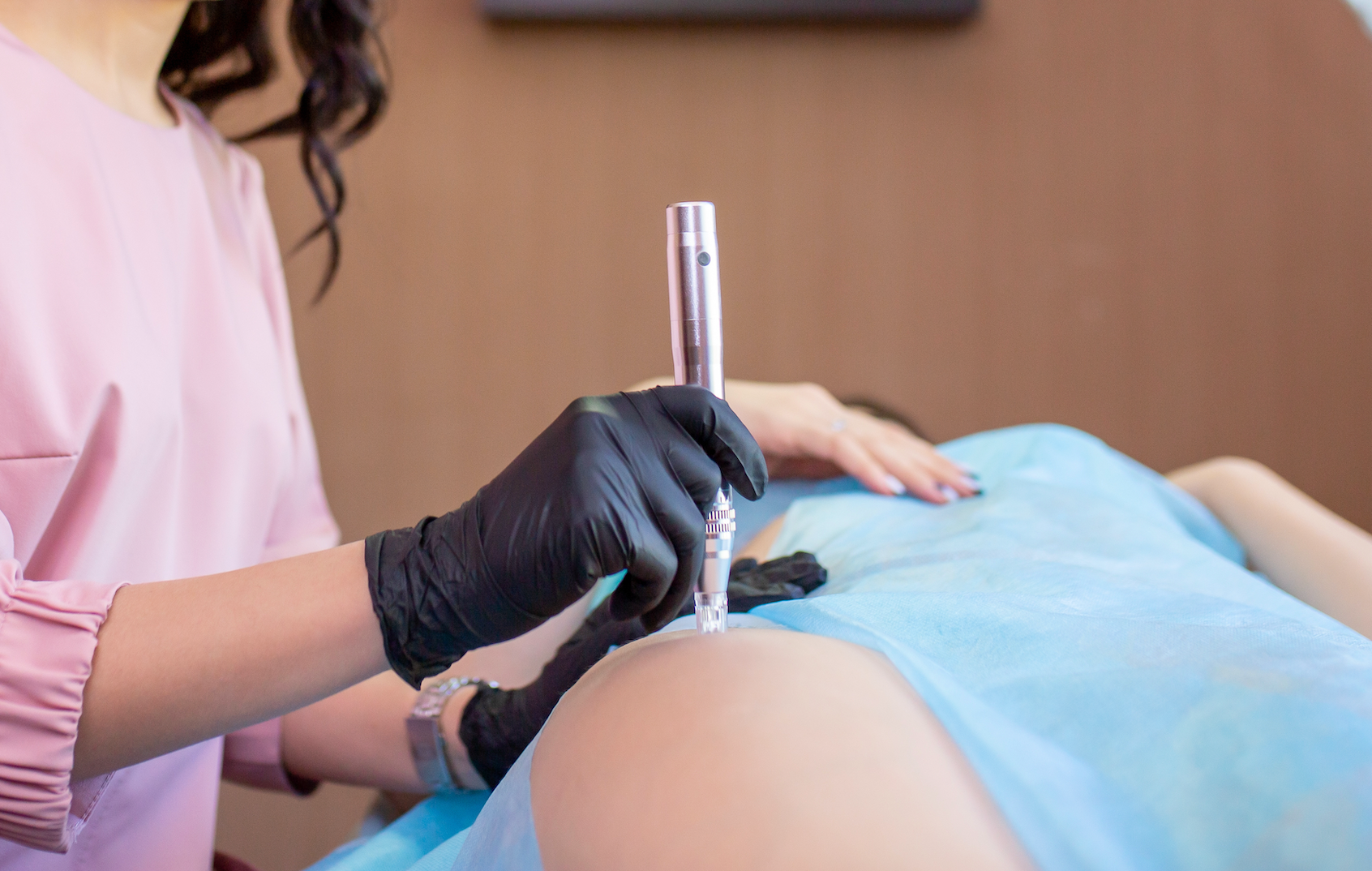Have you heard of microneedling? This procedure has gained attention in the past few years as a potential solution for tackling a number of skin concerns, like stretch marks— particularly older stretch marks that are resistant to conventional treatments.
Today we’ll cover what microneedling is, discuss the benefits and drawbacks of microneedling for stretch marks, and set realistic expectations for results. Let’s get started.
So What Is Microneedling?
Microneedling, also known as collagen induction therapy, involves the use of a device equipped with tiny needles that create controlled micro-injuries in the skin's surface. These micro-injuries are inflicted intentionally to stimulate the body's natural healing processes, in effort to promote the production of collagen and elastin, key structural components in your skin.
Theoretically, this will contribute to smoother and more even skin texture after healing, which is why is why it is often used for concerns that cause any sort of indentations in the skin, namely:
- Acne scarring
- Surgical scars
- Burns
- Enlarged pores
- Wrinkles
- Stretch marks
What Are The “Pros” Of Microneedling For Stretch Marks?
There are several advantages to using microneedling for stretch marks:
| Stimulation of Collagen | Microneedling prompts the production of collagen, which helps to improve the elasticity and firmness of the skin, potentially reducing the appearance of stretch marks. |
| Safe for Most Skin Types | Microneedling for stretch marks is generally safe for various skin types and tones, making it an accessible option for many individuals. |
| Limited Downtime | The procedure typically has minimal downtime, with mild redness and swelling that usually subside within a few days. |
What Are the “Cons” of Microneedling for Stretch Marks?
On the other hand, there are some disadvantages, or, at least, some factors to consider when you’re thinking about using microneedling as a technique to reduce your stretch marks’ appearance.
| Variable Results | The effectiveness of microneedling can vary from person to person. While some may see significant improvements, others might experience more modest results. |
| Discomfort and Sensitivity | Microneedling can cause discomfort during the procedure, and individuals with sensitive skin may experience heightened sensitivity afterward. |
| Multiple Sessions Required | Achieving noticeable results usually requires multiple sessions spaced weeks apart, which can be time-consuming and expensive. |
What Should I Expect From Microneedling?
It's important to set realistic expectations when considering microneedling for older stretch marks. While the procedure can improve skin texture and reduce the visibility of stretch marks, complete eradication may not be possible. Your unique results will depend on various factors, including the age and depth of the stretch marks (remember that color is a good indicator of this), individual skin characteristics, and adherence to aftercare instructions.
For information on how to take care of your skin after microneedling for stretch marks, make sure to chat with your dermatologist and microneedling technician.
How Can I Boost My Microneedling Results?
After a microneedling session, the skin is more receptive to topical treatments like our Stretch Mark Cream. This product can complement the microneedling process by nourishing the skin and promoting the healing process. After all, stretch mark creams like ours work best on newly formed wounds and scars.
However, it's crucial to keep in mind that after microneedling you have hundreds of tiny, open wounds. Consult with a dermatologist or medical professional before incorporating any new product into your skincare routine, especially following a microneedling treatment.





















Leave a comment